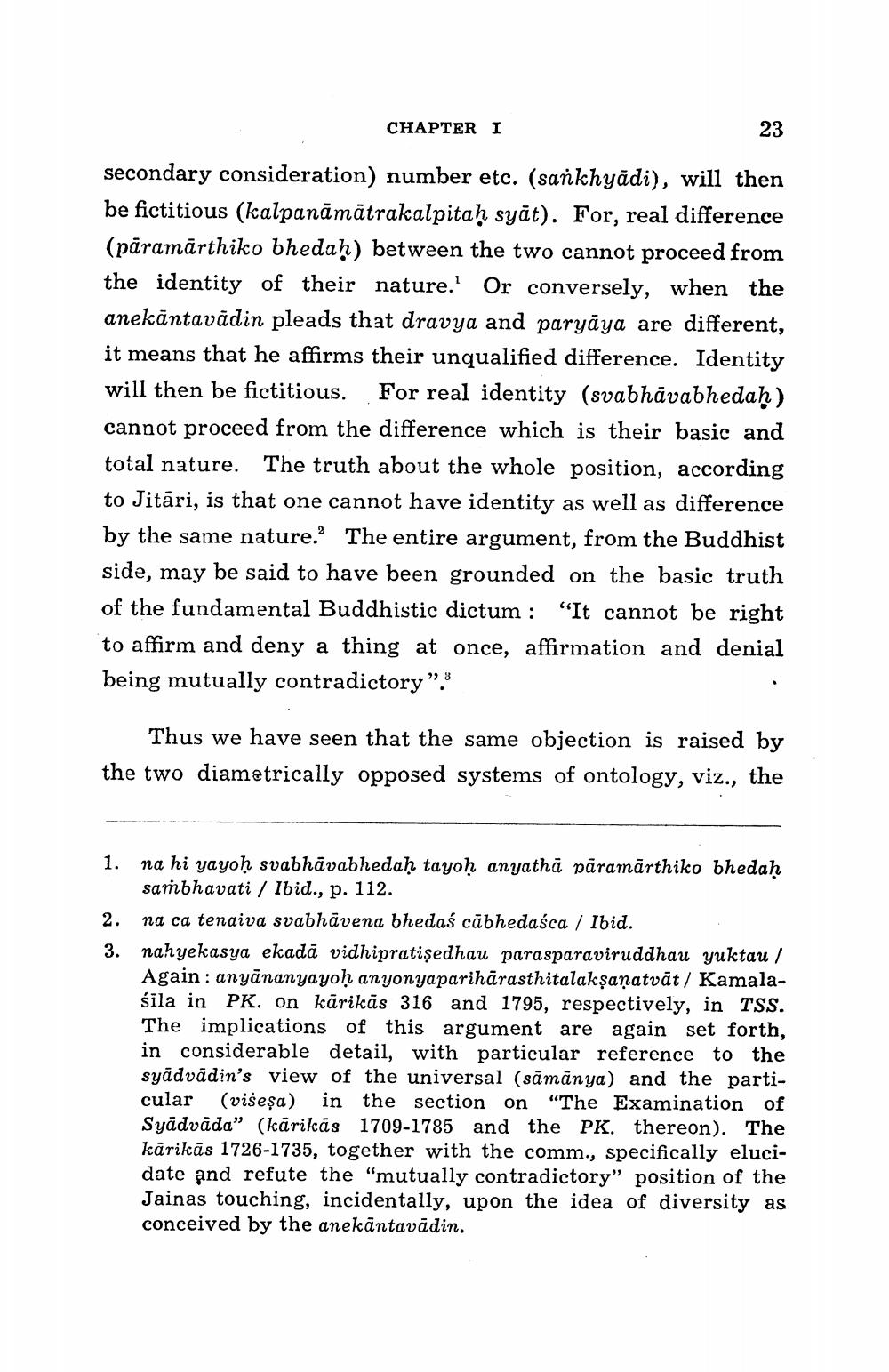________________
CHAPTER I
23
secondary consideration) number etc. (sankhyādi), will then be fictitious (kalpanāmātrakalpitaḥ syat). For, real difference (paramārthiko bhedah) between the two cannot proceed from the identity of their nature.' Or conversely, when the anekāntavädin pleads that dravya and paryaya are different, it means that he affirms their unqualified difference. Identity will then be fictitious. For real identity (svabhavabhedaḥ) cannot proceed from the difference which is their basic and total nature. The truth about the whole position, according to Jitāri, is that one cannot have identity as well as difference by the same nature. The entire argument, from the Buddhist side, may be said to have been grounded on the basic truth of the fundamental Buddhistic dictum : "It cannot be right to affirm and deny a thing at once, affirmation and denial being mutually contradictory"."
Thus we have seen that the same objection is raised by the two diametrically opposed systems of ontology, viz., the
1. na hi yayoḥ svabhāvabhedaḥ tayoḥ anyatha päramärthiko bhedaḥ sambhavati / Ibid., p. 112.
na ca tenaiva svabhävena bhedas cabhedaśca / Ibid.
2.
3. nahyekasya ekada vidhipratişedhau parasparaviruddhau yuktau / Again anyānanyayoḥ anyonyapariharasthitalakṣaṇatvāt / Kamalaśila in PK. on kärikās 316 and 1795, respectively, in TSS. The implications of this argument are again set forth, in considerable detail, with particular reference to the syadvadin's view of the universal (sāmānya) and the particular (viseṣa) in the section on "The Examination of Syadvada" (kārikās 1709-1785 and the PK. thereon). The kārikās 1726-1735, together with the comm., specifically elucidate and refute the "mutually contradictory" position of the Jainas touching, incidentally, upon the idea of diversity as conceived by the anekantavādin.




